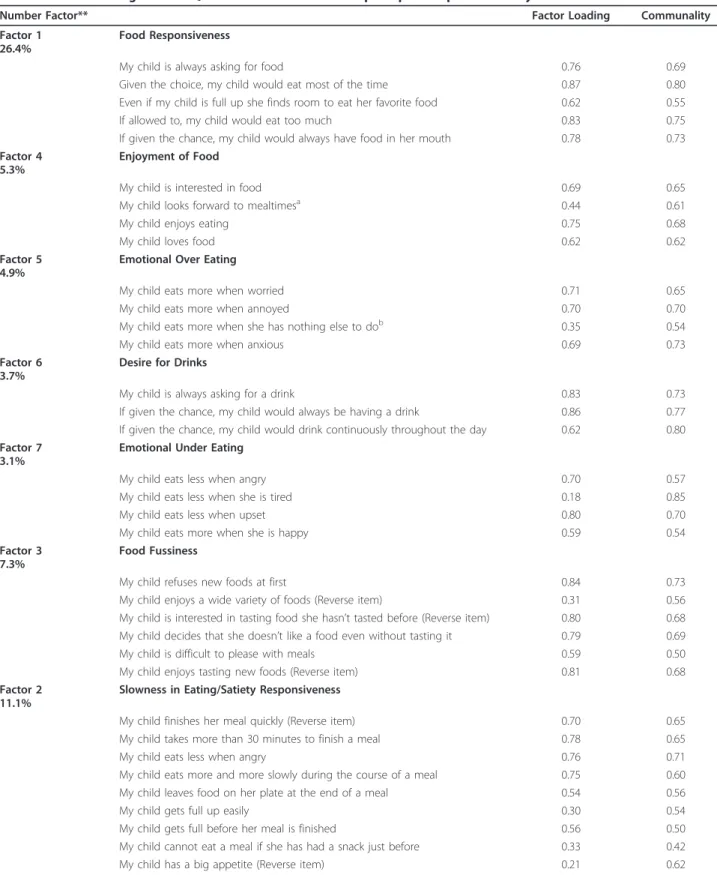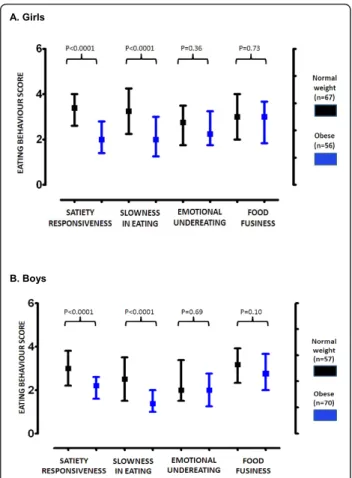Association between eating behavior scores and obesity in Chilean children
Texto completo
Figure



Documento similar
• Nutrition intervention programs in pre-primary or primary schools were included, whereas we refused articles whose variables were different from eating diet, for instance,
Abbreviations: AE, adverse event; BMI, body mass index; C, candesartan cilexetil; N, nifedipine
waist circumference, eating behavior (Child Eating Behavior Questionnaire), parenting behavior (Comprehensive Feeding Practices Questionnaire), physical activity (ActiGraph
PACS-R = Physical Appearance Comparison Scale-Revised; BEECOM = Body, Eating, and Exercise Comparison Orientation Measure (-L = Long version, -S = Short version); EDE-QS =
Second, multiple linear regression models were used to examine the associations between the MIBs (the intake of the three main meals, having a forenoon meal, having an afternoon
The objective of the present study is to determine the association between anthropometric measures such as Body Mass Index (BMI), Waist Circumference (WC) and
Body mass index (BMI) may change in parallel with the development of frailty, and assessing how it relates –mainly through obesity– to frailty states
After adjusting by sex, body mass index (BMI) and lipid levels, only the association with retinol remains significant, with children in the highest hs-CRP tertile group (hs-CRP ≥